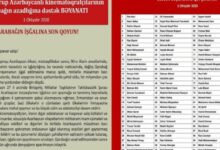West Azerbaijan Hasanlu Archaeological Site is one of the most important archaeological sites on the Iranian plateau.
In an interview with ISNA, Hassan Shiri, director of the Hasanlu National Base, said about this ancient site and its golden cup: Illuminating the dark corners of the region’s cultural developments during the New Bronze Age and the Old Iron Age was of particular importance.
The sum of activities and excavations carried out in the Soldoz plain has revealed important artifacts from different periods, all of which are classified according to scientific principles and cover several thousand years of the cultural history of human societies in this region.
Hasanlu archeological site was first excavated by an Iranian business delegation in 1313, and in 1315, Sir Orlstein, a British tourist and archaeologist, drilled several holes in it and found some objects.
However, most of the scientific and extensive excavations of this hill were carried out between 1334 and 1355 under the supervision of Professor Robert Henry Dyson.
In the early years of the excavation, the delegation dug a borehole in the center of the hill and almost in the lowest part of the hill. The borehole reached pristine soil and water at a depth of 18 meters from the hill surface at the time of the excavation.
In this borehole, 10 periods (classes) of settlement were identified, which indicate the settlement and human settlement from the sixth millennium BC to the beginning of the Islamic period on the mentioned area.
Due to the findings and contents of its third, fourth and fifth periods, Hasanlu archeological site is considered as the criterion of chronology and classification of the Iron Age in most of Iran (except for the sphere of power and influence of the Elamite civilization).







